Vauxhall Astra VXR review
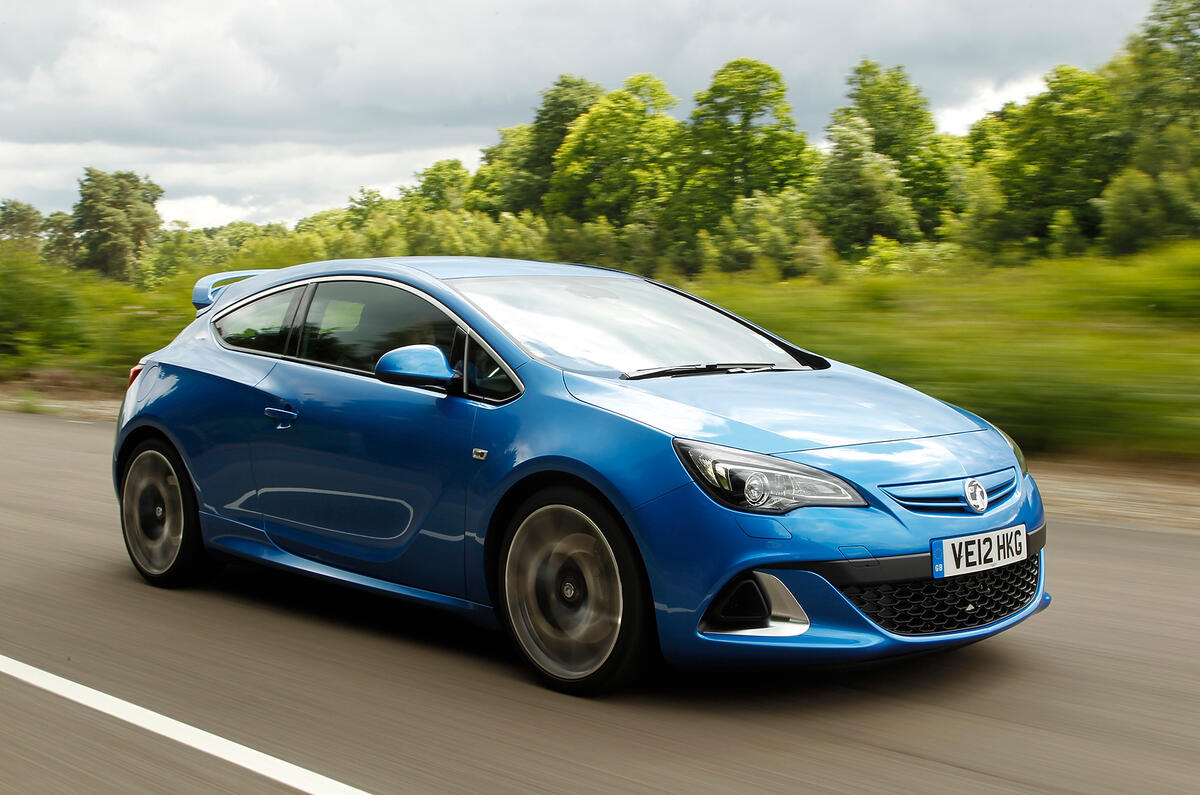
Astra VXR's 276bhp makes this a good-value car
The car you see here, the Vauxhall Astra VXR, is fairly typical fare for the unusual VXR performance sub-brand. It is identifiable not by its common theme of focused, high-revving pace, startlingly sharp handling or race-derived engineering nous.
Nope. VXR is rather more straightforward: if you can stick a Vauxhallbadge on it, and it’s a little bit bonkers, it could just make the grade.
Outwardly, the Astra looks wild. It also seems like quite good value for money. And on paper it is sufficiently pokey to qualify as a true VXR, because it makes 276bhp. And if you think that’s quite a lot to be pushing through its front wheels, you wouldn’t be alone, which is why the VXR has a mechanical specification to back up the power and not inconsiderable 295lb ft of torque. Still, it sounds, to us, quite raucous.
The truth is that fast Vauxhalls in general, and fast Astras in particular, have always been a slightly unruly bunch. Not necessarily in a bad way, either. Traditionally they’re loud, quick and capable of entertaining on a shallow but enjoyable level. Is this VXR more of the same?
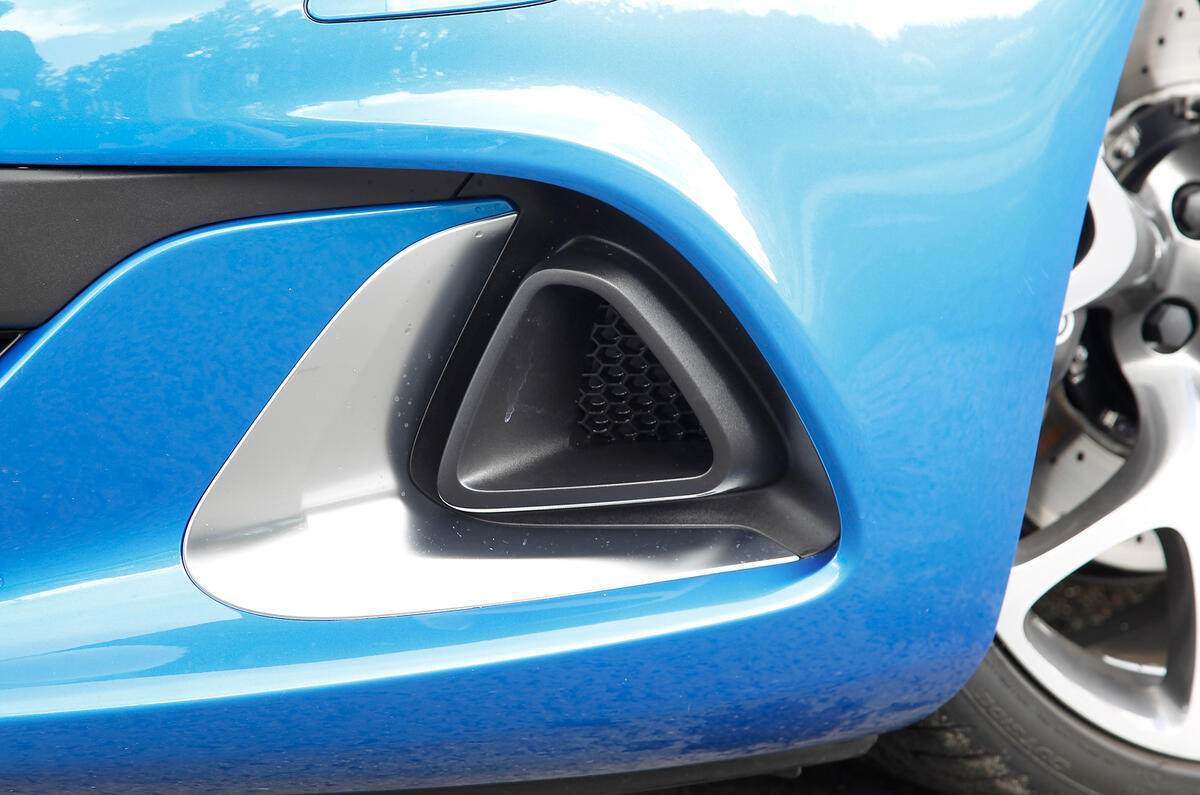
Large, triangular intakes direct ambient air into the front arches to cool the cross-drilled Brembo brakes
What we’re led to understand about Vauxhall Astra VXR buyers is that they don’t mind one iota if the cars they buy get noticed in a crowd. In fact, we’re told that it’s a disappointment to them if they don’t.
The latest Astra, then, is one they should like. It builds on the already taut and athletic shape of the three-door Astra hatch (which goes by the name ‘GTC’ and which Vauxhall wants you to think of as a coupé). Louder colours enter the fray, as do beefed-up bumpers at each end and side skirts down the middle, added to which are 19-inch alloy wheels. For a touch shy of an extra £1000, the alloys get bigger, the skirts become deeper and a prominent roof spoiler is fitted; Vauxhall expects some 85 per cent of buyers to take it up.
The hardware looks sufficient to back up the promise of the appearance. Those wheels – as striking as any we’ve seen as they are – are not just about looks and being wilfully easy to kerb. They weigh just 1.86kg each and are backed by sizeable cross-drilled and ventilated Brembo discs. Across the front axle alone, this set-up saves 14.5kg of unsprung mass over the equivalent wheel size on the regular GTC.
The engine is a turbocharged 2.0-litre four, derived from that used in the Vauxhall Insignia 2.0T but considerably beefed up for this application to provide its power and torque.
That it drives the front wheels only is no longer the cause for concern that it once might have been. The Astra VXR gets a mechanical limited-slip differential and Vauxhall’s HiPerStrut front suspension, which, like a similar system used on the last Ford Focus RS and theRenault Mégane 265, acts to reduce torque steer. At the rear, the VXR retains the torsion beam with Watt’s linkage fitted to other Astras.
The steering itself is hydraulically assisted rather than electrically as in other Astras, and there are magnetorheological adaptive dampers with three modes: Normal, Sport (in which they’re tighter) and VXR (in which they’re tighter again, and coupled to enhanced throttle response).
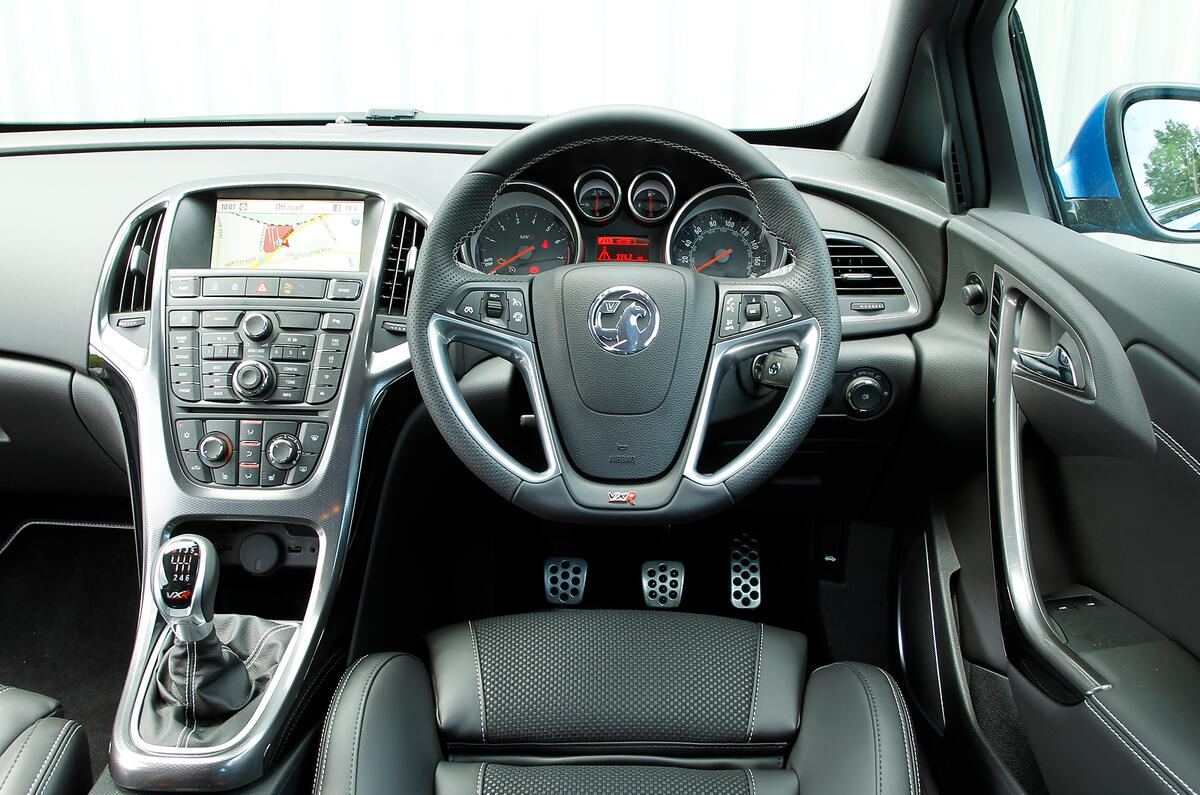
The Astra VXR looks different from its lesser brethren on the outside, but the cabin continues with a familiar theme
The Vauxhall VXR Astra may look very different from its lesser brethren on the outside, but the cabin continues a more familiar theme. There’s nothing much wrong with that, mind: the latest Astra’s cabin is accommodating and feels well built from mostly good-quality materials.
The front is generously roomy and, given the rakishness of the roof, the rear cabin is surprisingly easy to slip into; there is 940mm of rear headroom and typical rear legroom is a decent 800mm. The boot opening is a touch narrow, but there’s 380 litres of space back there. All told, this is a functional interior. The doors are also huge, and to open them with a car parked on either side can be a struggle.
However, look for sparkles of VXR-ness and, superbly supportive seats aside, you’ll find little beyond the gearlever knob, steering wheel and the diddy Sport and VXR buttons on the dashboard. When you press that VXR button, by the way, the dials turn red.
The raked A-pillars and low-swept roofline do not compromise visibility and the high beltline is liable to make drivers feel like they’re sitting lower than they actually are.
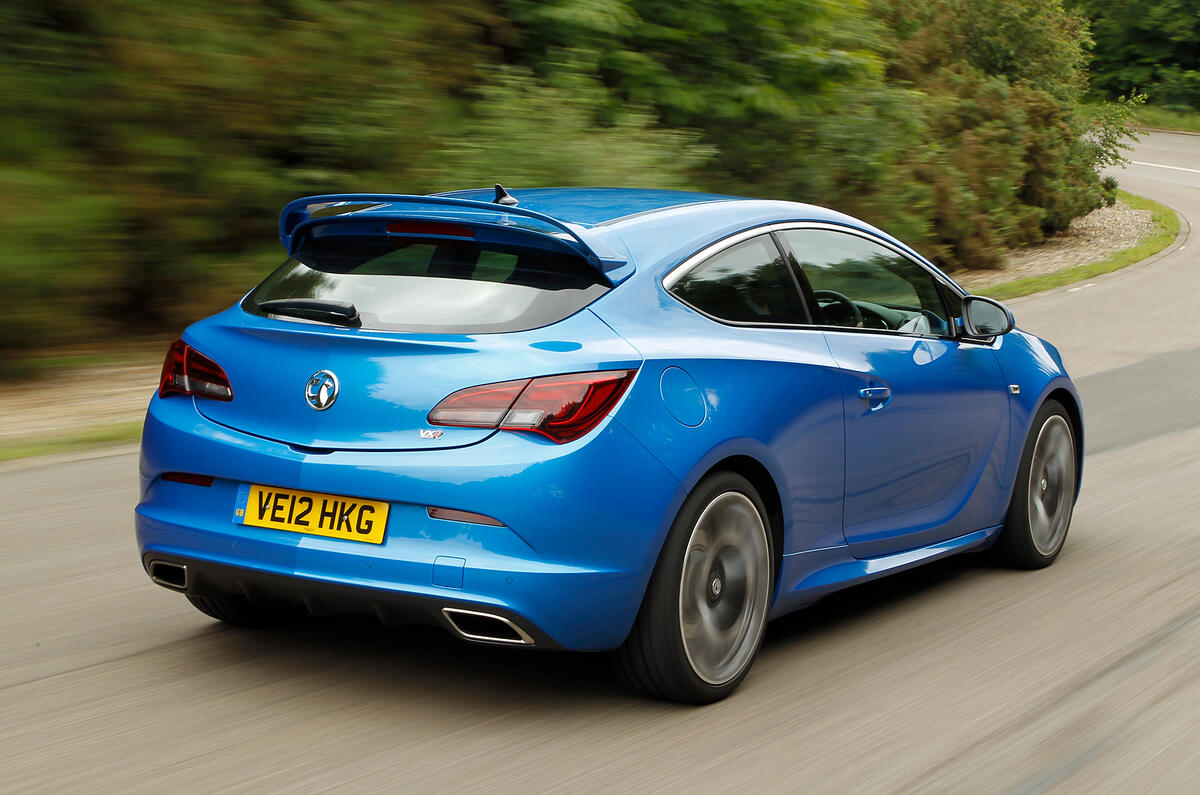
On a test track, we coaxed the VXR to 60mph in 6.4sec
Vauxhall claims not only that the Astra VXR is the fastest car in the class, but also that it will duck under the 6.0sec barrier in a sprint to 60mph. To which we say: that may well be true, but you’ll have to have left any semblance of mechanical sympathy behind when you signed on to the circuit.
At our test track, we coaxed the VXR to 60mph in 6.4sec. We did manage a one-way best of 6.2sec – with two people on board and a near-full tank, remember – but if you make any serious attempt to go quicker than that, you will have to ignore both the smell of a suffering clutch and the nagging feeling that you won’t be able to drive it home afterwards.
The 0-100mph time of 16.5sec, meanwhile, looks – and is – impressive in isolation. However, VXR owners are, we’re told, a fairly extravagant bunch who like their cars to be fast – and to that extent, we have a little bad news. This Astra is no quicker to 100mph than its predecessor was.
For all that, it remains the most powerful hot hatchback in its class. And its in-gear acceleration is certainly noteworthy. Any car that can dispatch 50-70mph in fourth gear in less than four seconds is at the sharper end of the scale. It makes an extraordinary whistling noise while doing it, too; from the outside, it leaves you thinking you’ve just been buzzed by a jet fighter.
However, the throttle response – unless you push the VXR button on the dash – isn’t so sharp. At low revs in Normal or Sport modes, there’s some lag. Engaging the VXR mode sorts that and brings with it a welcome crispness we’d rather wasn’t confined to the firmest damper setting.
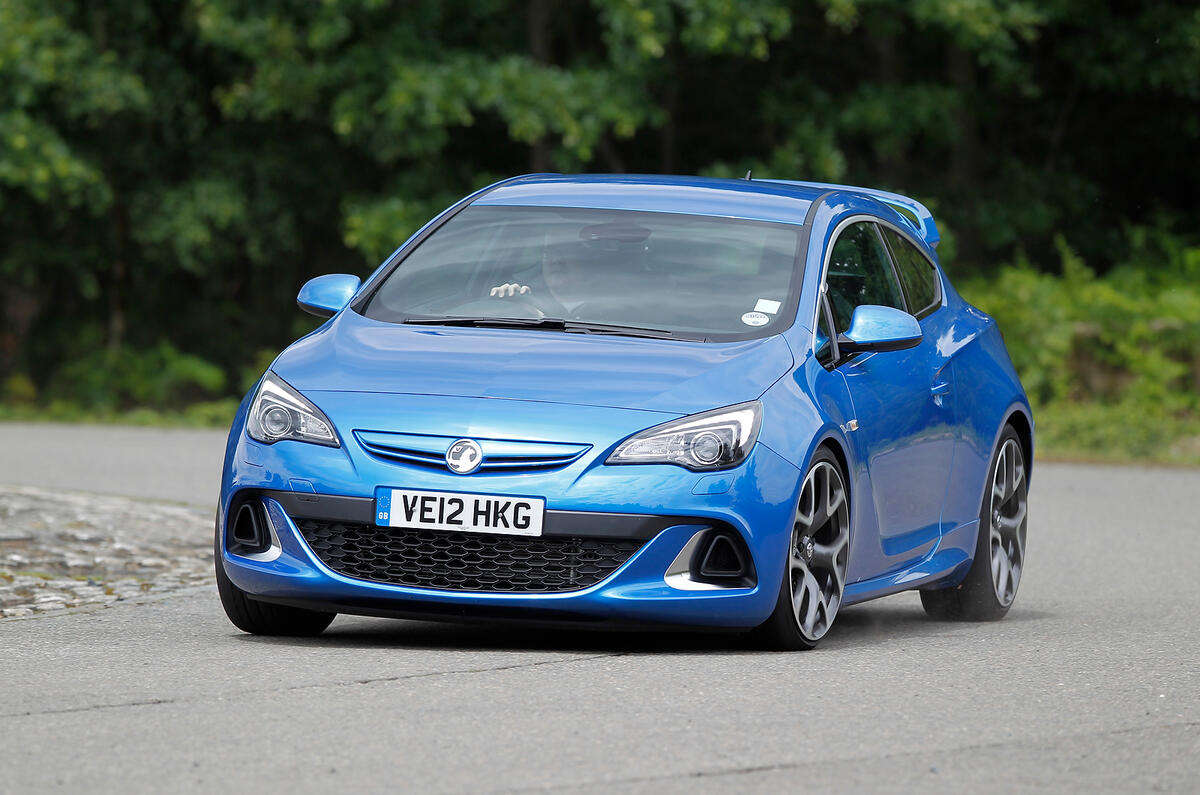
Trundle away from rest in the Vauxhall Astra VXR and perhaps the most striking thing about its dynamics is how deftly it rides. Okay, the Astra is not a Mercedes S-class worrier or anything, but you would be pushed to criticise a car rolling on 245/35 ZR20 rubber for riding in such a compliant manner.
The VXR steers smoothly and accurately, too, with good stability around the straight-ahead. Coupled to good refinement, that leaves it feeling like a mature, grown-up kind of hot hatchback. Is it? Of course not. It’s a VXR, for heaven’s sake, so when you wind up the motor, on poor surfaces there’s a little tug at the steering wheel as the limited-slip differential apportions traction, and you’re off.
Pushing the Astra VXR down a well sighted, twisty road is a fast and enjoyable but slightly curious experience. Body control in all suspension modes, but particularly the firmer two, is very tight. There’s a little lean and it rolls quickly, just not very far. And from then onwards in a corner, you can really lean on the VXR.
Our maximum lateral grip figure on the test track of 0.99g mid-corner doesn’t seem to quite do justice to how much mid-corner roadholding the Astra seems to find. There are very few cars, it feels to us, that would keep up with it down a given road. Certainly, it’s fast on a test track; the 1min 16.7sec time we posted around our dry handling circuit was as fast as the last Ford Focus RS.
With that, though, the VXR remains a touch inert. Its cornering all feels like it’s being done by the front end. The rear is faithful, but lift off or turn in while trail braking and there’s very little evidence, even with the stability control switched completely out, that the back end is willing to pitch in.
The VXR’s brakes, while over-servoed at the top of the pedal’s travel, resisted fade indomitably on our test tracks, so you’ll have no bother at all on the road. On a green, recently dried surface, they hauled the VXR from 70mph to rest in a competitive 45.3m, actually slightly longer than on our grippy wet asphalt.
Vauxhall claims that the Astra VXR is cheaper than its main rivals once adjusted for specification. Certainly, it is seemingly well equipped.
The Volkswagen Scirocco R is more expensive, and although theRenault Mégane 265 can be had with the essential limited-slip differential in Cup spec, it lacks many of the VXR’s comfort options. It’s a pity, then, that the VXR is not expected to retain its value as well as either of those rivals.
In our hands, the VXR returned a steady 26.5mpg overall, which is acceptable. On a touring run, we’d expect you to see 33mpg

Class-leading amounts of power? Check. Slightly rowdy power delivery? Check. Attention-seeking looks and a noise like an industrial vacuum cleaner at full chat? Check and check.
Yep, say what you like about the Vauxhall Astra VXR, but it does what its stablemates and predecessors do best: let you know that it is here and interested in going fast.
What’s different this time – for an Astra, at least – is that this raucousness comes with an everyday usability. This Astra really is a fine motorway companion, pliant and refined.
It’s fast on a good road or a circuit, too, finding exceptional grip and tremendous traction. And that, says Vauxhall, is what VXR buyers expect, and quite enjoyable it is, too.
For the rest of us, though, we’d want just a little something else to complete those star ratings – more engaging handling and a true feeling of agility being chief among them.
Still, this is a very like-able car.


No comments:
Post a Comment